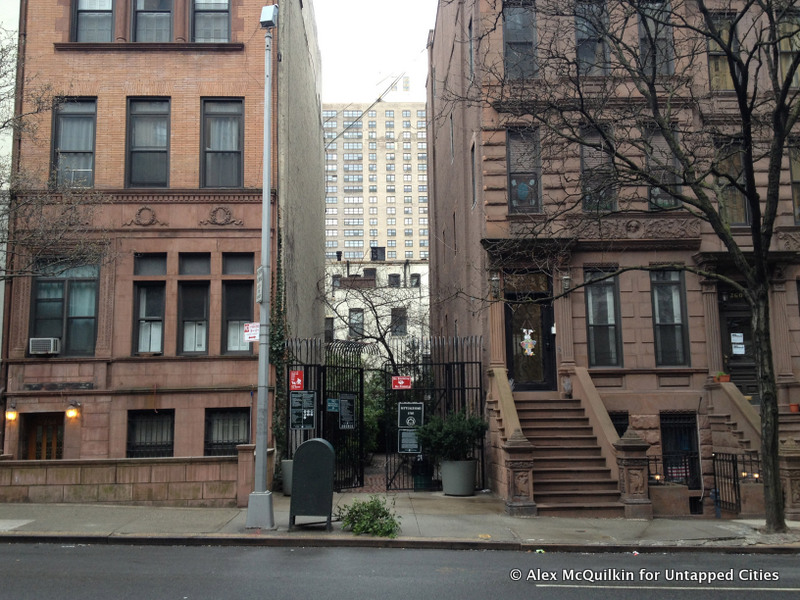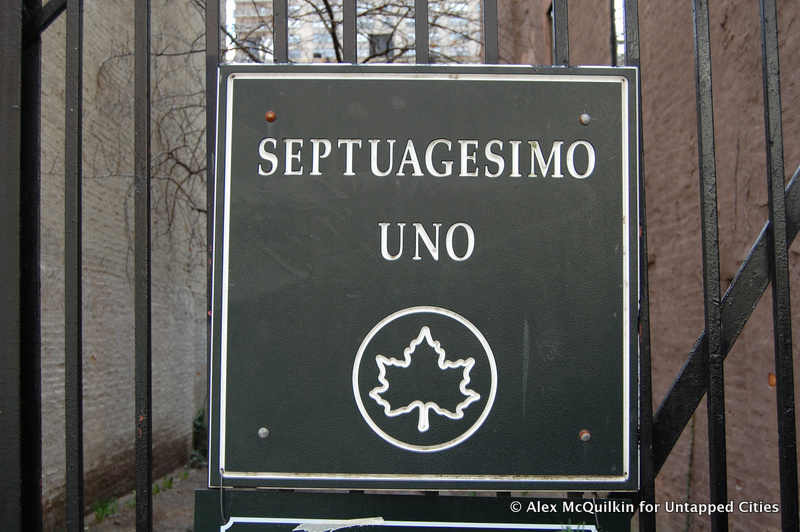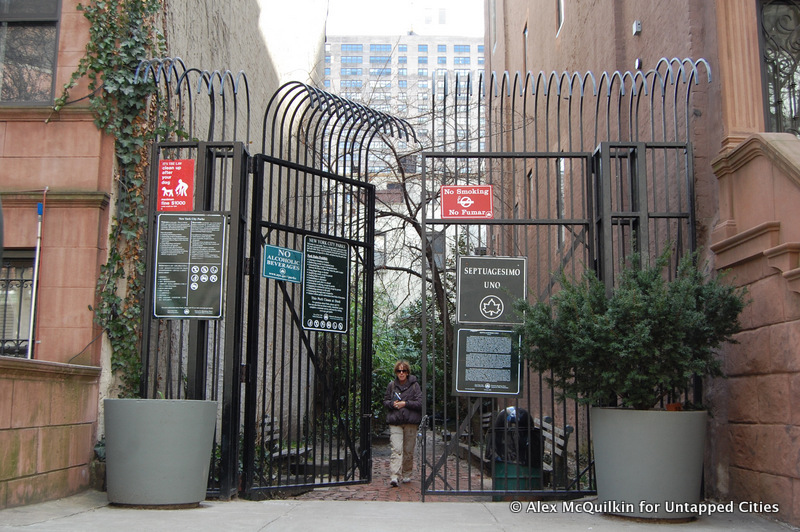
Gazing up at stately old townhouses and stumbling around miniature dogs, we were sure we had been given the wrong address. We were on the Upper West Side, on a mission to find one of the smallest park in New York City. At 256 West 71st Street, it should be between Amsterdam and West End avenues, on the south side… wait! There, between two four-story brownstones, like a short, awkward cousin in a family photo, was Septuagesimo Uno.

Calling Septuagesimo Uno a “park” is generous. In fact, the parks department actually calls it a “triangle/plaza.” But it is neither of those either. Septuagesimo Uno is more like a forgotten dead-end alley that has been reclaimed by Mother Nature. It is a world away from the grand public gathering places (Union Square, Bryant Park, Grand Army Plaza) that we tend to associate with New York City parks. At two-fifths of an acre in size, Septuagesimo Uno could fit into Central Park more than 21,000 times.

Therein lies its attraction. Because it is hard to find and, once there, there is little to actually do (there are six benches), Septuagesimo Uno has become popular among an in-the-know group of locals who crave its quiet seclusion. Last Saturday, when the temperature dared venture above 60 degrees for the first time in a long time, Septuagesimo Uno offered a shady respite between the boisterous crowds of Broadway and the howling commotion of the Riverside Park dog run. A British tourist, a restaurant worker on his break, and two high school kids were among the park’s slow trickle of patrons.

Today, so-called pocket parks are very much in vogue among the country’s urban planning circles. But New York City’s early pocket parks like Septuagesimo Uno have humble beginnings. Mayor John Lindsay began the Vest Pocket Park Campaign in the 1960s to help tackle two looming issues: the city’s scarcity of accessible park space and its abundance of vacant lots. The “vest pocket parks” were most often established on tiny vacant parcels, sometimes conspicuously squeezed between tall buildings on either side.
The somewhat haphazard shapes and locations of these parks might be familiar to those who have encountered the community gardens that are prevalent in neighborhoods like East Harlem, the East Village, and Bedford-Stuyvesant. But whereas these gardens were appropriated and cared for by neighbors in often run-down sections of the city, the pocket parks were consciously adopted by the city, and so are more consistently maintained and operated—and perhaps have a surer future. But both have their origins in formerly private properties that were eventually foreclosed and transferred to the city.
Septuagesimo Uno was acquired by the city through condemnation on March 28, 1969, near the height of the city’s budget woes. But the park wasn’t officially opened by the parks department until May 1981 (probably because of aforementioned budget woes). In 2000, the park benefitted from a $14,000 restoration project that, among other things, contributed the gates that now help enforce the park’s opening hours. The same year, the park got its current name, a Latin-ization of its former bland, but perhaps more fitting name: “71st Street Plot.”
Check out 13 more pocket parks in NYC and read more about the superlatives of NYC, including the smallest plot of land, narrowest building and more.





